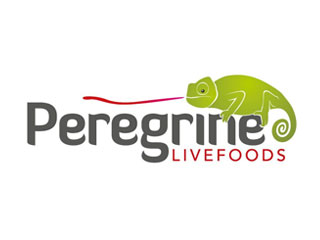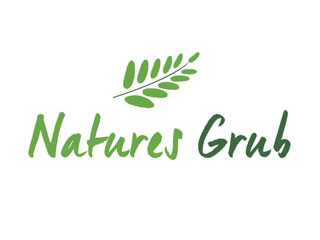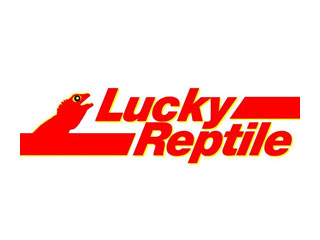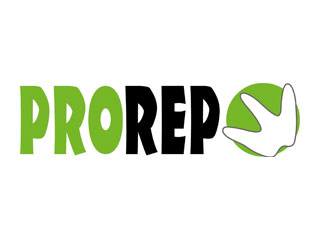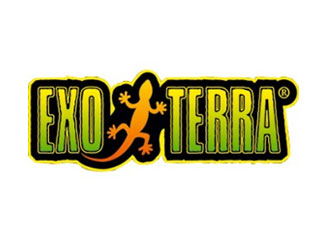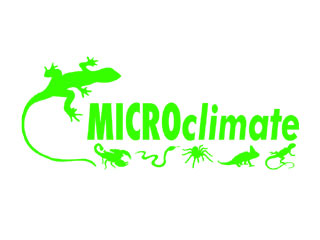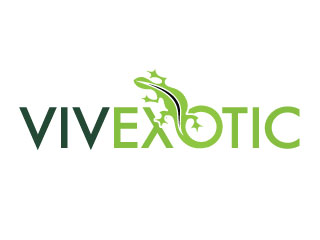Our Guide to Reptile Safe Edible Plants
The subject of choosing reptile safe plants to feed your reptile can sometimes seem daunting; especially for keepers of herbivores such as tortoises and Uromastyx, and omnivores like Bearded Dragons and Blue Tongued Skinks.

We have compiled this list of edible plants that can be found growing naturally in the wild, and safe foods which can be purchased in your local supermarket or from ourselves online or in store (especially useful during the winter months).
What is a healthy diet for my reptile?
Same as humans, herbivorous and omnivorous reptiles require a nutrient rich diet in order to gain essential vitamins and minerals. Their wild ancestors have access to thousands of different plant species, each offering unique nutritional benefits. Variety is key, but we always recommend as part of your feeding routine, to add supplements to enhance the nutritional value of their food as much as possible.
Often, people find they have previously been given the wrong information or advice as to what vegetation to feed their reptiles. It can sometimes take a little patience to wean an animal off of a poor diet, reptiles can be quite stubborn! But with perseverance, the benefits to the animal long term is quite literally life changing. The result of a poor diet often can be hidden, affecting the organs and tissue of the reptile. Other times it is more obvious, in tortoises for example, a shell with peaks (known as Pyramiding) is a visual sign of a prolonged poor diet.
The most common mistake is the offering of fruit. Aside from a few tropical species, most tortoises and lizards like Bearded Dragons aren’t able to process glucose, as it ferments faster and upsets their gut flora. They may appear to ‘love it’ but as with most sweet treats, they aren’t necessarily good for them. Sometimes scenting the new (healthier) food with the sweetness of a strawberry for example, can help to wean them off of the sugar.
Adding calcium to the food for reptiles is standard practice; but some foods such as Spinach, Chard, Parsley and Beetroot are high in Oxalic Acid - this actively binds calcium and prevents it from being absorbed, resulting in deficiency. It is best to avoid these food items and offer alternatives.
The same applies with feeding Iceberg Lettuce and cucumber; these have an exceptionally high water content with low nutritional value. If this forms the bulk of the diet, the animal will likely become deficient in vitamins and minerals.
Plants within the cabbage family (Brassica) should be kept to the minimum. They contain high levels of Goitrogens, these can affect growth and metabolism by interfering with hormones. It has also been linked to kidney and bladder stones when fed over long periods. Though they are classed as edible, we have not included any of the Brassica plants on our list as there are plenty of healthier alternatives available.
What plants should I offer my reptile?
The foods you offer will vary based on the dietary requirements of the species you keep. Therefore it is vital that you research the specific requirements of your species, focusing on plants commonly found in their native habitat.
The foods we list below in are all non toxic, reptile safe plants which should make up a varied diet. It is important to not stick to any one particular food item to avoid the diet becoming monotonous and nutritionally unbalanced.
Supermarket foods
Whether it is due to the time of year and lack of foraging options, or simply for convenience - supermarket greens are a reliable option for ensuring you always have food for your reptile. Care must be taken to offer all food items in moderation and vary them as much as possible; preferably using these in conjunction with some of the other plants listed below.
Feed as part of a varied diet
| Basil (Ocimum basilicum) | Mint (Mentha spp.) |
| Globe Artichoke (Cynara spp.) | Oregano (Origanum vilgare spp.) |
| Lambs Lettuce (Valerianella spp.) | Thyme (Thymus spp.) |
Feed in moderation only
| Courgette (Cucurbita) | Rocket (Eruca) |
| Endive (Chicorum endivia) | Romaine Lettuce (Lactuca) |
| Frisee Lettuce (Chicorum endiva) | Sage (Salvia officinalis) |
| Radicchio (Chicorum) | Squash (Cucurbita spp.) |
| Red Leaf Lettuce (Lactuca) | Watercress (Nasturtium) |
Garden and terrarium plants
These are an easy way to offer a huge variety to your animals. Reptiles are often attracted to the bright colours of certain flowers, so this is an excellent way of tempting picky feeders. It is recommended for most plants, that the roots are not to be offered, and if stems seem particularly thick or fibrous are usually best removed. Ensure that the plants are free from pesticides and are clean before being offered to your reptile.
Feed as part of a varied diet
| Abutilon (Abutilon spp.) | Lilac (Syringa spp.) |
| African Violet (Saintpaulia) | Lipstick Plant (Aeschynanthus spp.) |
| Aster (Aster spp.) | Livingstone Daisy (Mesembryanthemum spp.) |
| Baby’s Tears (Soleirolia soleirolii) | Malope Mallow (Malope trifida) |
| Bears Breeches (Acanthus spp.) | Marigold (Calentula spp.) |
| Bellflower (Campanula spp.) | Marjoram (Origanum majorana) |
| Bergamot (Monarda spp.) | Mexican Petunia (Ruellia spp.) |
| Bromeliad (Bromelioideae) | Monkey Flower (Mumulus spp.) |
| Coneflower (Echinacea) | Mulberry Tree - Leaves not fruit (Morus spp.) |
| Desert Willow (Chilopsis linearis) | Musk Mallow (Malva moschata) |
| Diascia (Diascia spp.) | Namesia (Namesia spp.) |
| Elm (Ulmus spp.) | Nerve Plant (Fittonia spp.) |
| Evening Primrose (Oenothera spp.) | Pansy (Viola spp.) |
| False Goats Beard (Astilbe spp.) | Peperomia (Peperomia spp.) |
| Firecracker Flower (Crossandra) | Polka Dot Plant (Hypostes phyllostachya) |
| Friendship Plant (Pilea spp.) | Prayer Plant (Maranta leuconeura) |
| Geranium (Geranium spp.) | Purple Loosestrife (Lythrum salicaria) |
| Globe Thistle (Echinops spp.) | Scaredy Cat (Plectranthus spp.) |
| Hebe (Hebe spp.) | Snap Dragon (Antirrhinum spp.) |
| Hibiscus (Hibiscus rosa-sinensis) | Spider Plant (Chlorohytum comosum) |
| Hollyhock (Alcea rosea) | Spotted Deadnettle (Lamium maculatum) |
| Jacaranda (Jacaranda spp.) | Turtle Vine (Callisia spp.) |
| Lavatera (Lavatera spp.) | Viola (Viola spp.) |
| Lady’s Purse (Calceolaria spp.) | Zinnia (Zinnia spp.) |
Feed in moderation only
| Aluminium/Friendship Plant (Pilea cadiereia) | Nasturtium (Tropaeolum majus) |
| Artillery Plant (Pilea microphylla) | Petunia (Petunia spp.) |
| Cast Iron Plant (Aspidistra spp.) | Wandering Jew/Spiderwort (Tradescantia spp.) |
| Heather (Calluna spp.) | Wax Begonia (Begonia semperflorens) |
| Mother in Laws Tongue/Snake Plant (Sansevieria sp.) | Wild Rose - Leaves and petals as a treat (Rosa spp.) |
Grasses and ferns
These types of plants form up to 80% of the diet for many grassland species such as Leopard and Sulcata tortoises. Grasses can occasionally be overlooked by other herbivores, but still worth offering as part of a well balanced diet, as these can offer nutrients not found in other plants.
Feed as part of a varied diet
| Barley Grass - not grains (Hordeum spp.) | Oat Grass (Avena sativa) |
| Boston Fern (Nephrolepsis spp.) | Pampas Grass (Cortaderia selloana) |
| Carex (Carex spp.) | Rye Grass (Lolium perenne) |
| Fountain Grass (Pennisetum spp.) | Timothy Grass (Phleum pratense) |
| Maize - not corn on the cob (Zea mays) | Wheat Grass (Triticum spp.) |
| Millet (Panicum miliaceum) |
Succulents and cacti
Enjoyed by all herbivores and omnivores. Found in abundance in their natural habitat, these are packed with vitamins and minerals, and contain an excellent source of moisture. For cacti with spines, this will need preparing before offering to your animals.
Feed as part of a varied diet
| Aoneum (Aonium spp.) | House Leek (Sempervivum spp.) |
| Broadleaf Stonecrop (Sedum spathulifolium) | Ice Plant (Sedum spectabile) |
| Echeveria (Echeveria spp.) | Mistletoe Cactus (Rhipsalis spp.) |
| Gasteria (Gasteria spp.) | Mother of Pearl (Graptopetalum spp.) |
| Haworthia (Haworthia spp.) | Opuntia Cactus/Prickly Pear (Opuntia spp.) |
| Heartleaf Iceplant (Aptenia cordifolia) | Sedum/Stonecrop (Sedum spp.) |
Feed in moderation only
| Aloe Vera (Aloe spp.) | Jade Plant/Money Tree (Crassula spp.) |
Wild Flowers
These are plants and flowers which can be found growing wild in the UK. Foraging offers the opportunity to provide a hugely varied diet for your reptiles, there are several plant identifying apps available which will help to make sure you are collecting the right species.
Care must be taken when foraging to ensure that the plants you pick are free from pollutants (i.e. not by the roadside) pesticides and fertilizers. Wash thoroughly to remove as many foreign bodies as possible before offering to your pet.
Feed as part of a varied diet
| Blue Sowthistle (Cicerbits spp.) | Lambs Lettuce (Valerianella spp.) |
| Bristly Oxtongue (Picris echioides) | Mallow (Malva spp.) |
| Broadleaf Filaree (Erodium botrys) | Navelwort (Umbilicus rupestris) |
| Cats Ear (Hypochaeris radicata) | Nipplewort (Lapansa communis) |
| Chickweed (Cerastium spp.) | Plantain (Plantago spp.) |
| Chicory - not roots (Cichorium intybus) | Red or Purple Deadnettle (Lamium purpureum) |
| Cransebill Geranium (Geranium spp.) | Red Valerian (Centranthus spp.) |
| Creeping Thistle - young leaves (Cirsium arvense) | Scotch Thistle - young leaves (Onopordum spp.) |
| Forget-Me-Not (Myosotis spp.) | Sea Holly (Eringium spp.) |
| Goats Beard (Tragopogon spp.) | Shining Cranesbill (Geranium lucidum) |
| Ground Elder (Aegopodium podagraria) | Sow Thistle (Sonchus spp.) |
| Hawksbeard (Crepis spp.) | Stitchwort (Stellaria spp.) |
| Hawkbit (Leontodon spp.) | Swinecress (Coronopus spp.) |
| Hedge Woundwort (Stachys sylvatica) | Teasel leaves (Dipsacus fullonum) |
| Horse Parsley (Smyrnium spp.) | Violet (Viola spp.) |
| Kidney Weed (Dichondra spp.) | Wall Lettuce (Mycelis muralis) |
| Knapweed (Centeurea spp.) | White Deadnettle (Lamium album) |
Feed in moderation only
| Bindweed (Convulvulus spp.) | Dandelion - Flowers/ young leaves (Taraxacum spp.) |
| Clover (Trifolium spp.) | Nettle - young leaves only (Urtica dioica) |



